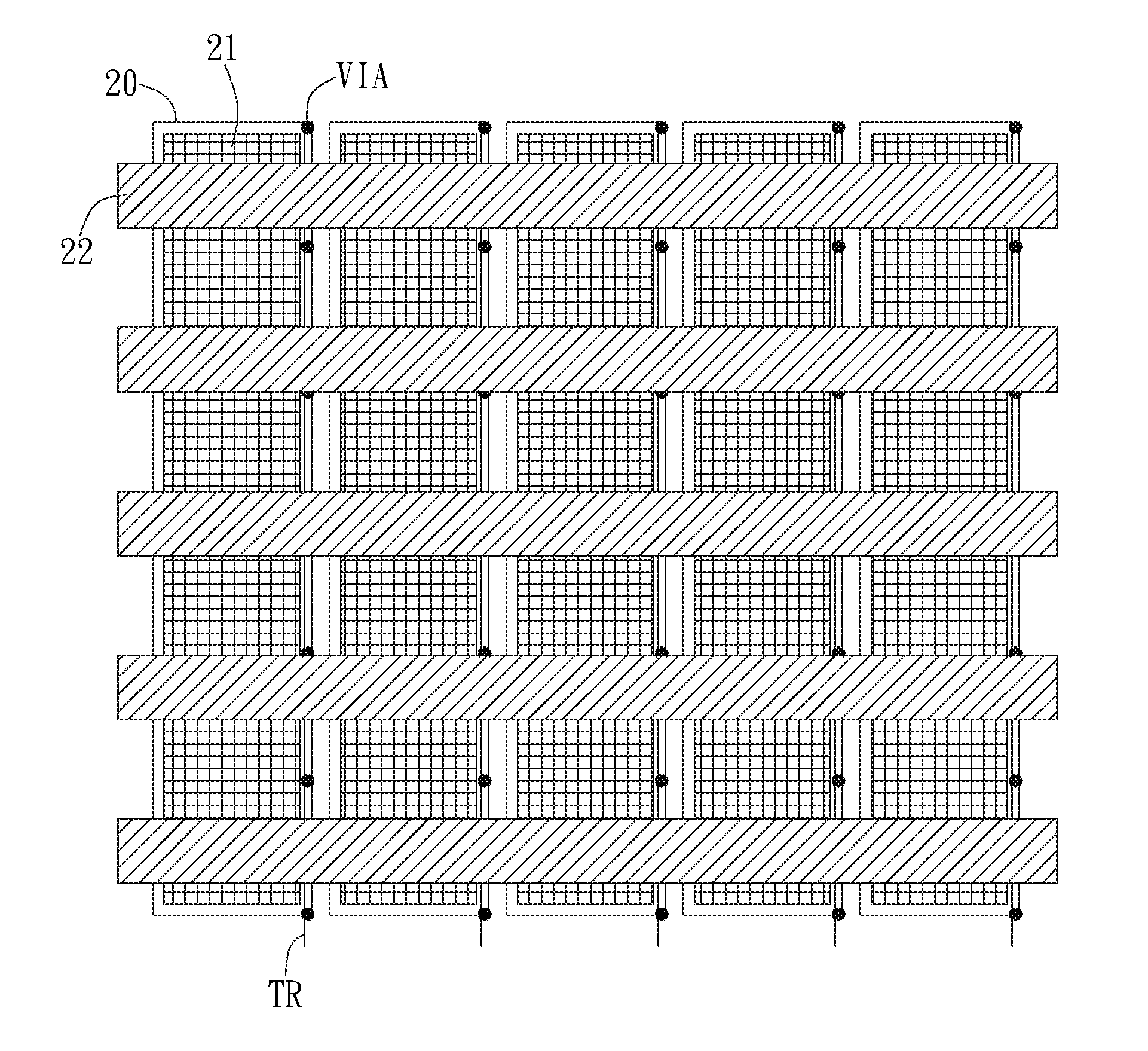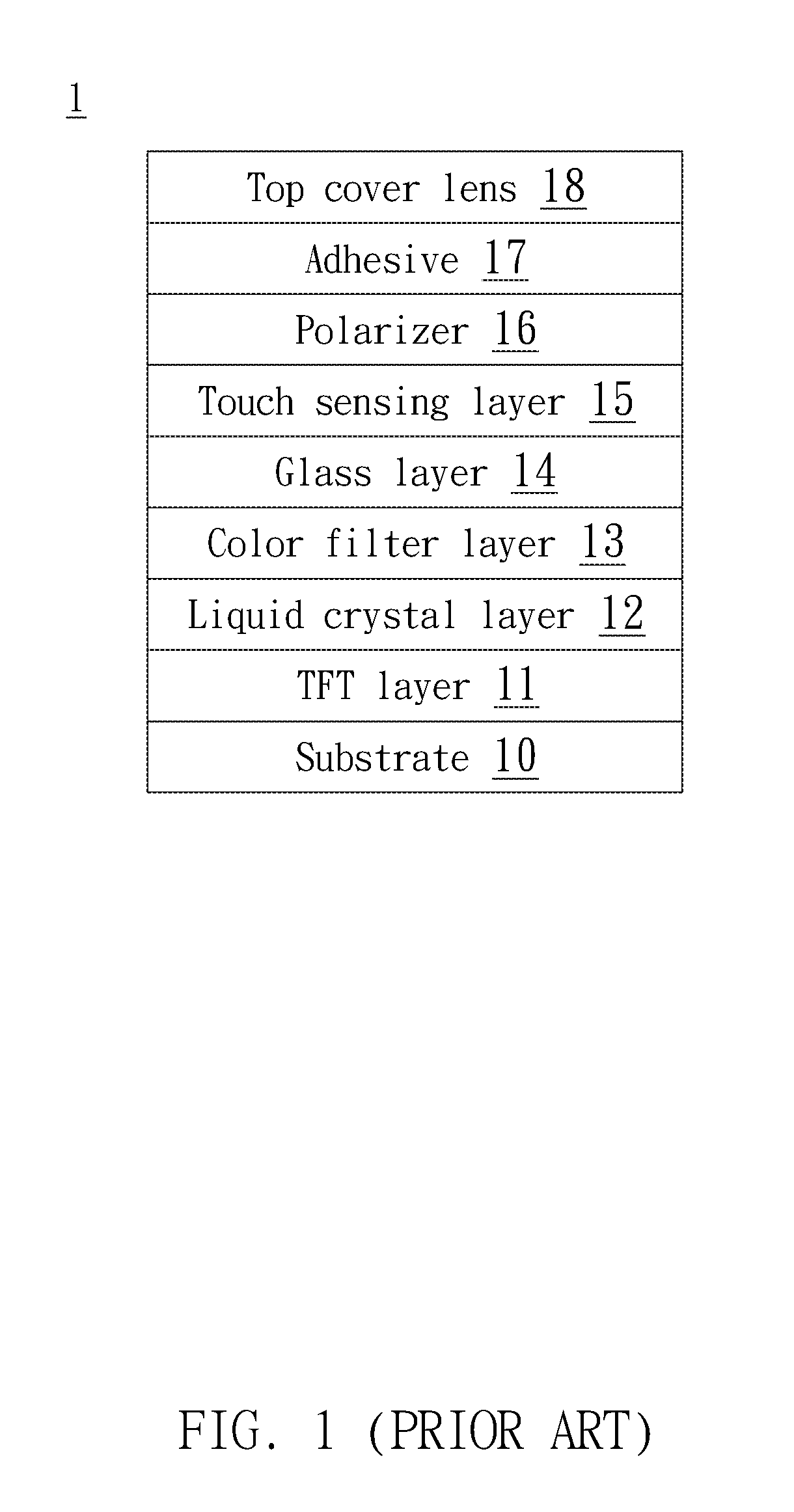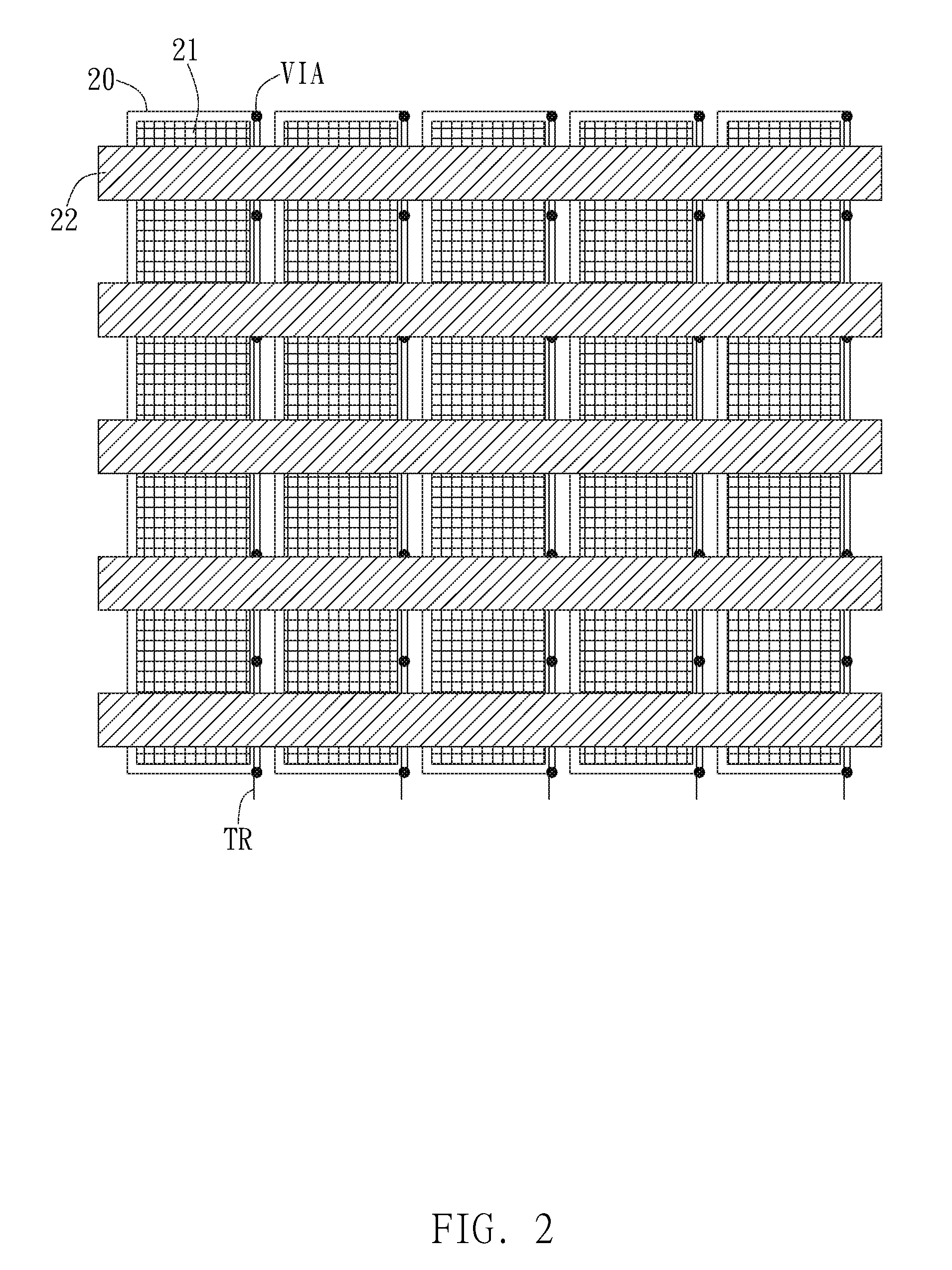In-cell touch panel
a technology of in-cell touch panel and capacitive touch panel, which is applied in the field of touch panel, can solve the problems that the in-cell capacitive touch panel cannot meet the thinnest thickness requirement of novel portable electronic products such as mobile phones, tablet pcs, notebooks, etc., and achieve the effects of enhancing the signal-noise ratio (snr), reducing the rc loading of the common electrode, and reducing the entire rc loading of the in-cell
- Summary
- Abstract
- Description
- Claims
- Application Information
AI Technical Summary
Benefits of technology
Problems solved by technology
Method used
Image
Examples
first embodiment
[0054]Then, please refer to FIG. 3A. FIG. 3A illustrates a cross-sectional schematic diagram of the laminated structure of the in-cell mutual-capacitive touch panel in the invention. As shown in FIG. 3A, the laminated structure 3 of the in-cell mutual-capacitive touch panel includes a substrate 30, a thin-film transistor (TFT) layer 31, a liquid crystal layer 32, a color filter layer 33, a glass layer 34, and a second conductive layer 35. The TFT layer 31 is disposed on the substrate 30. A first conductive layer 310 and a common electrode 312 are disposed in the TFT layer 31 and the first conductive layer 310 is formed after the common electrode 312 is formed. The first conductive layer 310 is arranged in mesh type. The liquid crystal layer 32 including a plurality of liquid crystal units LC is disposed above the TFT layer 31. The color filter layer 33 is disposed above the liquid crystal layer 32. The glass layer 34 is disposed above the color filter layer 33. The second conductive...
second embodiment
[0058]Then, please refer to FIG. 4A. FIG. 4A illustrates a cross-sectional schematic diagram of the laminated structure of the in-cell mutual-capacitive touch panel in the invention. As shown in FIG. 4A, the laminated structure 4 of the in-cell mutual-capacitive touch panel includes a substrate 40, a TFT layer 41, a liquid crystal layer 42, a color filter layer 43, a glass layer 44, and a second conductive layer 45. The TFT layer 41 is disposed on the substrate 40. A first conductive layer 410 and a common electrode 412 are disposed in the TFT layer 41 and the first conductive layer 410 is formed before the common electrode 412 is formed. The first conductive layer 410 is arranged in mesh type. The liquid crystal layer 42 including a plurality of liquid crystal units LC is disposed above the TFT layer 41. The color filter layer 43 is disposed above the liquid crystal layer 42. The glass layer 44 is disposed above the color filter layer 43. The second conductive layer 45 is disposed ...
third embodiment
[0062]Then, please refer to FIG. 5A. FIG. 5A illustrates a cross-sectional schematic diagram of the laminated structure of the in-cell mutual-capacitive touch panel in the invention. As shown in FIG. 5A, the laminated structure 5 of the in-cell mutual-capacitive touch panel includes a substrate 50, a TFT layer 51, a liquid crystal layer 52, a color filter layer 53, a glass layer 54, and a second conductive layer 55. The TFT layer 51 is disposed on the substrate 50. A first conductive layer 510 and a common electrode 512 are disposed in the TFT layer 51 and the first conductive layer 510 is formed after the common electrode 512 is formed. The first conductive layer 510 is arranged in mesh type. The liquid crystal layer 52 including a plurality of liquid crystal units LC is disposed above the TFT layer 51. The color filter layer 53 is disposed above the liquid crystal layer 52. The glass layer 54 is disposed above the color filter layer 53. The second conductive layer 55 is disposed a...
PUM
| Property | Measurement | Unit |
|---|---|---|
| conductive | aaaaa | aaaaa |
| transparent conductive | aaaaa | aaaaa |
| light resistance | aaaaa | aaaaa |
Abstract
Description
Claims
Application Information
 Login to View More
Login to View More - R&D
- Intellectual Property
- Life Sciences
- Materials
- Tech Scout
- Unparalleled Data Quality
- Higher Quality Content
- 60% Fewer Hallucinations
Browse by: Latest US Patents, China's latest patents, Technical Efficacy Thesaurus, Application Domain, Technology Topic, Popular Technical Reports.
© 2025 PatSnap. All rights reserved.Legal|Privacy policy|Modern Slavery Act Transparency Statement|Sitemap|About US| Contact US: help@patsnap.com



